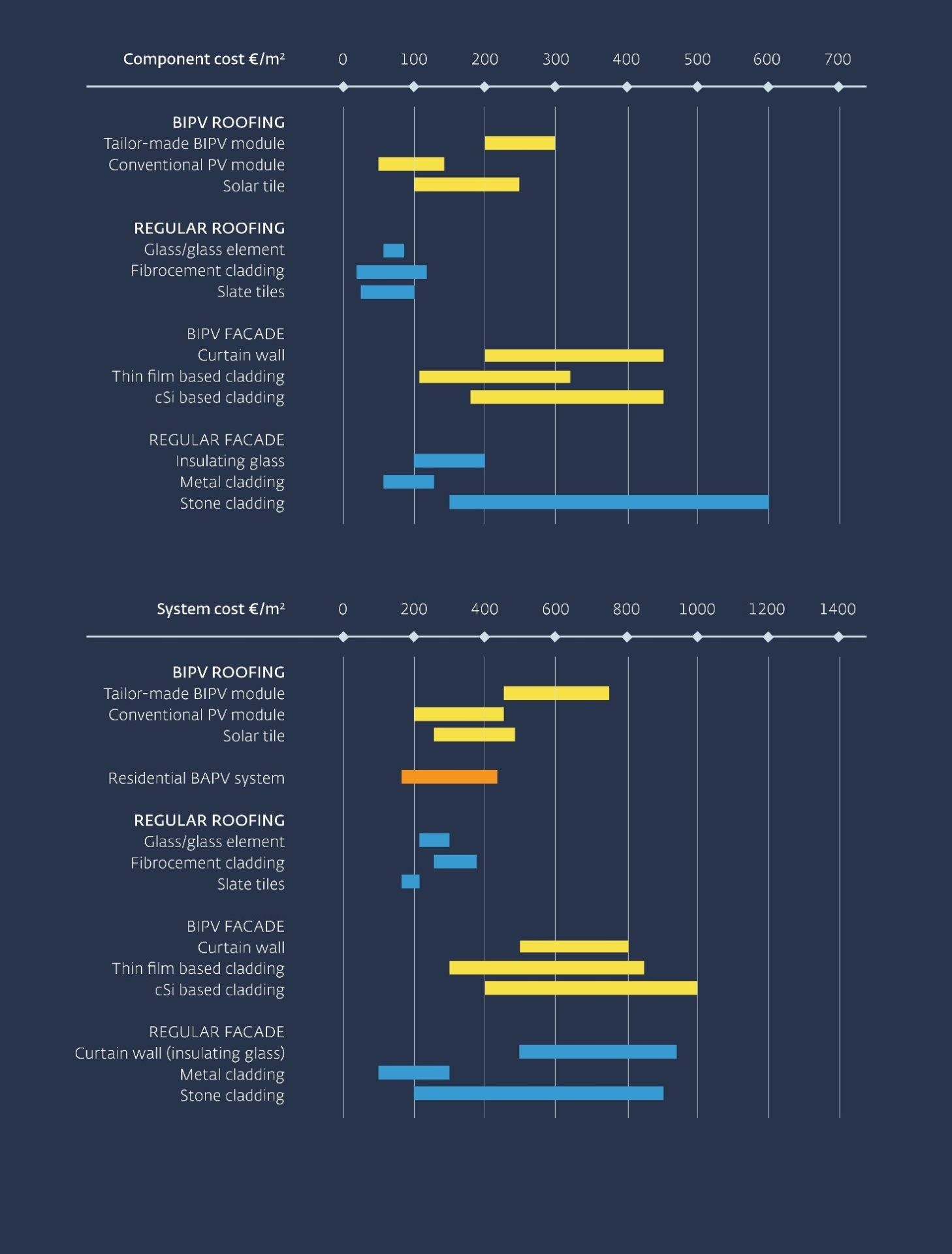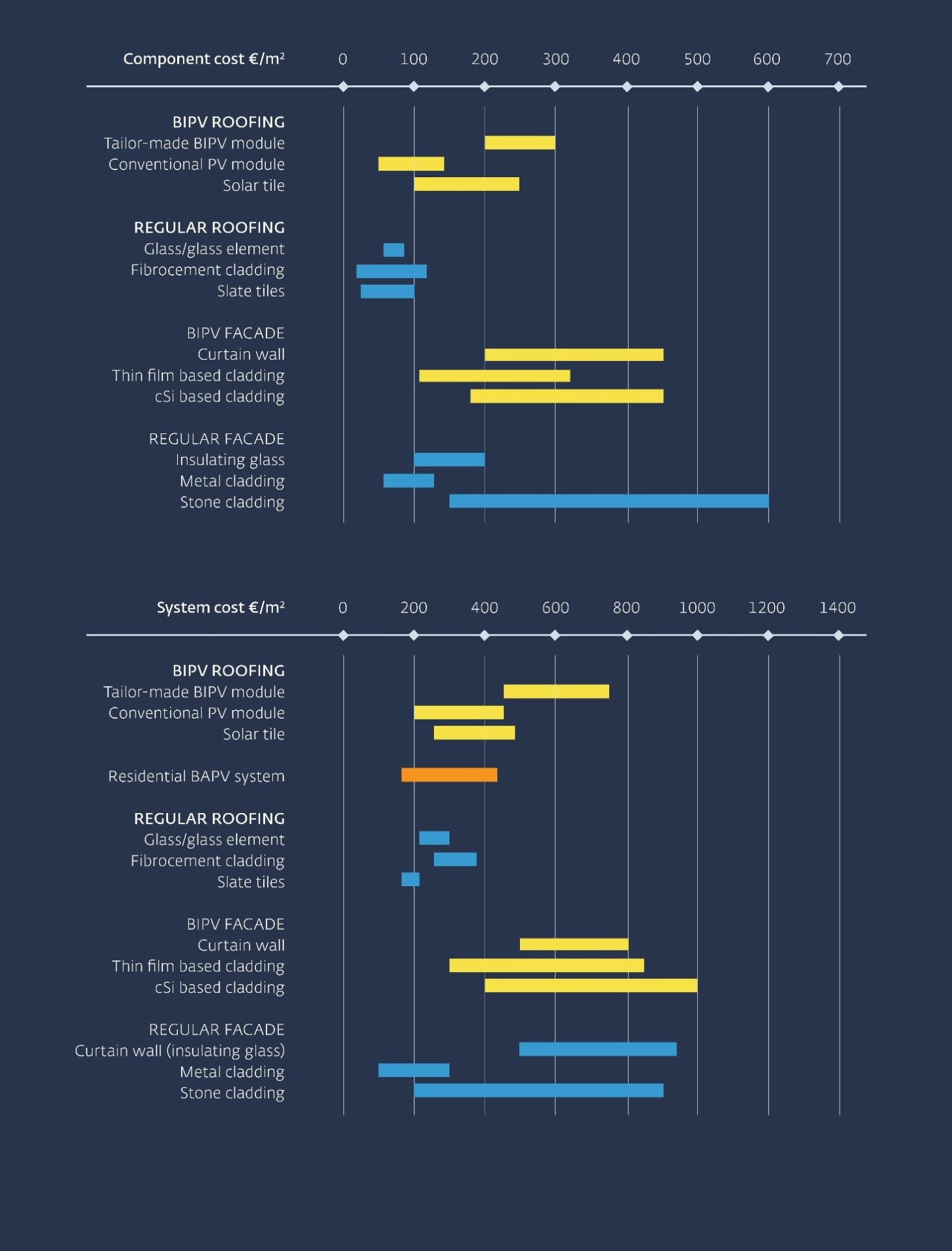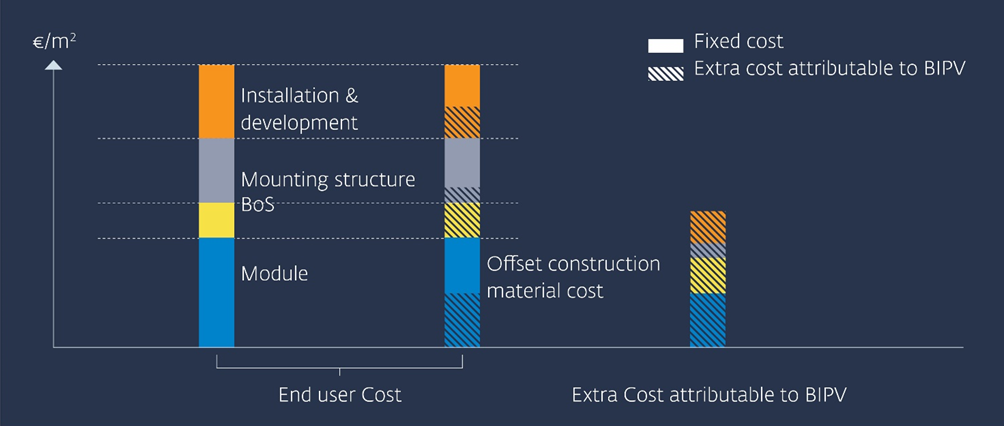The competitiveness is defined as “the fact of being able to compete successfully with other companies, countries, organizations, etc.” [1]. Thus, in this case, BIPV competitiveness could be defined as the fact of being able for a BIPV construction material, system and electricity generating unit to compete successfully with other traditional construction materials, systems and electricity generating units. Within the next paragraphs two perimeters are explained which can be used to define the BIPV cost competitiveness.
Component cost of BIPV and regular roofing and façade. More details within the BIPV Status Report.
System cost of BIPV and regular roofing and façade. More details within the BIPV Status Report.
A holistic project-based evaluation of the economic attractiveness of BIPV solutions consists in an analysis of all cash flows generated by a specific project, allowing to obtain an estimation of all costs but also all revenues associated with the BIPV systems on their operational lifetime. This type of competitiveness is called “total cost and revenues of ownership”. Indeed, such business model based on the valuation of the generated electricity, including a part of incentives when possible, represents the typical business model applied to BIPV installations [2][3]. It is important to highlight that these competitiveness assessments focus exclusively on values that can be quantified. However, other values linked to aesthetics, multi-functionality and environmental aspects, which are key advantages of BIPV, exist. These values can be a cornerstone of on-site renewable energy production, thus contributing to building stock’s decarbonisation. Although, these values cannot easily be quantified, as they are partially subjective or not easily accountable. Hence, they are not generally part of the cost competitiveness evaluation.
Schematic view of the determination of the extra cost of BIPV. More details within the BIPV Status Report.
References:
[1] www.dictionary.cambridge.org
[2] ICARES, TECNALIA, SUPSI, WIP, Onyx Solar, Ernst Schweizer. BIPV market and stakeholder analysis. s.l.: BIPVBOOST, 2019
[3] [Online] [Cited: 23 09 2020.] www.solarpowereurope.org/ bipv-can-unlock-new-opportunitiesfor-european-green-deal




